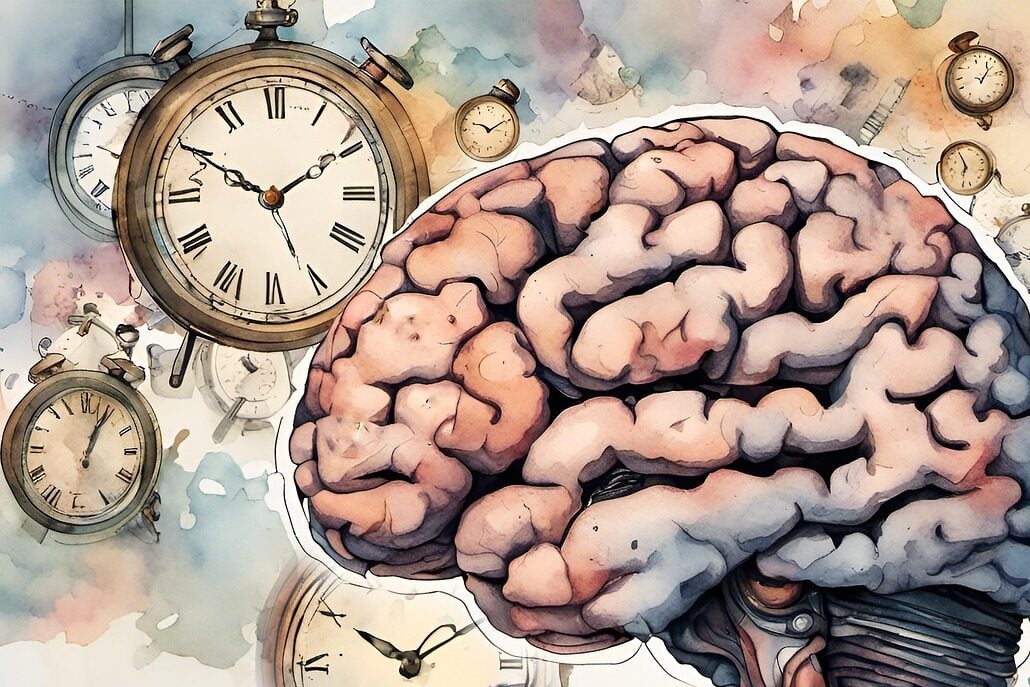How do voices in schizophrenia come about? What happens in the human mind that sets intense and controlling voices, distorting the reality of the affected? What are the key elements in the spectrum? How can they be understood, mapped—conceptually, and structured for care?
It is postulated here that the human mind is the collection of all the electrical and chemical impulses of nerve cells, with their features and interactions. This means that within the cranium, everything else is the brain, aside impulses. There is no function for which the brain is ascribed that does not involve impulses, regardless of circuit or center. Impulses exceed synaptic connections, clumps of neurons and genes. What would synapses mean if they only had adhesive neuroligins and neurexins not neuromodulators, neurotransmitters and neuropeptides?
How then do impulses interact? Or, what architecture of their interactions matter? What are the features of this architecture? What makes order different from disorder?
Neuroscience has established that nerve cells in cortical areas of people living with schizophrenia are disorganized, including loss to the gray matter.
How do these observations about nerve cells affect impulses to instigate disorder?
It is hypothesized here that all electrical and chemical impulses of nerve cells are in sets or loops across circuits in the brain. It is how they drift in the loops that determine functions. Simply, whenever there is a cluster of neurons, or nucleus, somewhere in the brain known for a function, the electrical and chemical impulses there form loops, whose structures iterate what they do. There are loops of impulses with different shapes across the brain, say, M N O. Each loop organizes information or memory, with the capacity for the sense of self, free will or intentionality, emotions, regulations and feelings. All loops have sense of self within. There is access to some centers for sense of self in the loops. It is where control is activated. Everything that can be controlled is done from the points of the sense of self in the loops of impulses. Some of this access is provided by the shape of the loops, determined in some cases by the arrangements of gyri and sulci.
One feature of chemical impulses in loops is called drifts or stairs. They are destinations where chemical impulses are rationed or filled. In a loop, there are combinations that make determinations. For example, PQR could be a ration of chemicals impulses for a taste, with respective percentages for each, contrasting with other tastes, and from touch, smell, vision and hearing. If P is less, or Q is more, the taste maybe lost. This happens in an illness or from side-effects of some psychopharmacological medications.
Loops of impulses are also arrayed in ways that one loop is different from the next in dimensions. This means that order or states may not just be that loops are in the right shapes or the ration in the appropriate measures, but the array of loops matches with outcomes. Sleep for example, is theorized here to be a particular array of loops, across centers in the brain, bringing about and maintaining the state. Wakefulness could also be the range of an array.
In CNS electrophysiology, it is established that electrical impulses leap from node to node in myelinated axons, in what is called saltatory conduction. This is different from in unmyelinated axons, with continuous conduction.
It is proposed here that myelin sheaths are the stairs or drifts of electrical impulses. They are the factor that makes electrical impulses effect what is described as predictive coding, processing and prediction error. In a loop, some electrical impulses leap ahead of others, to interact with chemical impulses. They do so like they had done before, in what can be called, early-splits or go-before, so that processes are faster. If the early-split matches with the input, nothing is done, if not, the incoming one goes acquires the right properties. This means that if something is seen, the first perception is produced by early-split, if it matches then nothing, if not, the incoming electrical impulses interacts with the right combination.
Drifts or stairs of electrical impulses, with their part ration or splits, influence drifts or stairs of chemical impulses. Electrical impulses play an almost equal role in loops as chemical impulses. There are other features of impulses in sets, like sequences, principal spot, pre-/prioritization.
Condensation
There are billions of neurons in the brain with trillions of synapses. Each neuron can be described as having trees, connecting to 6000 or 10000 other neurons. All neurons have electrical and chemical signals, messages or impulses. In a nucleus, the impulses form loops. Also, when the branch of a neural tree [or axon terminal] travels to connect elsewhere, the impulses provided form a loop too. When there are specific populations of neurons in a brain center, for a function, different from other populations in that center, respective loops of impulses and their arrays make determinations.
There is no isolated impulse of 1 electrical and chemical set doing a function, they work in concert. Simply, say there is a neuron with the terminals E, connecting within its local area and faraway, when an electrical impulse travels through its axon, triggering a chemical impulse in its foremost line, the electrical impulse and chemical impulse proceed within a loop, with others from other terminals of neurons around. It could be a near constant loop, immediate or shifting loop, but there is often a part the connection plays in the little whole. Like for taste, the connection can be Q, while others are P and R, for the taste experience of saltiness, say PQR. Though, combinations are not this straightforward.
Loops of impulses also become arrayed, where PQR has its dimensions but can be diagonal to BCD. This array sometimes sets how things are related. For example, some neurons in the primary visual cortex may connect to some in the prefrontal cortex, what is referred to as ‘communication’ are mechanized by loops of impulses, organizing what is seen, known and its difference from others. These loops are arrayed, so that ‘known tables’ are close, or chairs, or the sound of a vehicle and the sight of it. The loop could be JKL, then arrayed in a way that lets JKL be adjacent to STU, explaining what is known as concepts, categories or sequential memory.
The abundance of synapses in the brain results in loops that organize information and arrays of loops that coordinate internal and external senses. Arrays disruption is why anxiety may lead to faster heartbeat, higher vasodilation or tremors, as the drop in the loops responsible for some thoughts may be so sharp, affecting the dimensions of other loops in a near of far array, changing the order.
Neurons in an area, know for a particular function may contribute axons to other areas known for other functions. This contribution leads to having loops of impulses elsewhere, such that when there is some interference, it could lead to functional affects across loops.
Auditory Hallucinations
If neurons in the gray matter of the prefrontal cortex are disorganized, it implies that the structure of the loops of impulses would be disorganized and the array of loops as well. If some neural collections are missing, it indicates something similar.
A loop with the structure M could be how parts of the memory of an event are organized. The array MnO, of different loops could be how other parts are organized. W could be the loops that hold voices of the individual or of others—like the voice of known people, strange people or famous and unknown people, to that individual.
It is possible to have simulations of voices of others, or regular hallucinations, come by—automatically or with control. It is easily dismissed as fantasy, using intentionality, available from loops, when thinking about something. Simply, hearing something in the voice of some cousin is possible, but often understood then dismissed.
In schizophrenic psychosis, there is an origination and domination problem of some auditory loops of impulses, including of their connections to the frontal cortex. This origination maybe due to a loop that fell out of shape or an intrusion in the array between some loops, M^n*O, that allowed for continuity where there shouldn’t be. It affects speech, with continuous response to voices, incoherence or jumbled speech.
A key casualty in some loops is the sense of self, it results in detachment or dissociation in schizophrenic psychosis. This loss of sense of self could be from missing loops, and result in the loss of control to some functions.
The rations or fills of chemical impulses are hardly complete in cases, affecting self, control, and sensations. There could also be malfunctioning of splits of electrical impulses, where jumps are made to go first, without the follow-up. This means that the first perception is almost often taken, without a return that changes the impression.
This could be from external senses or existing loops, where instead of knowing that bread in the dumpster is not food, because it is there and could have been for some time, the return within that loop or elsewhere goes missing, causing it to be seen as such. This could also be due to myelin dysfunction, where instead of a larger permission for double transport or faster, the opposite is the case.
There could also be changes in rations where instead of PQR for taste or other sensations, it could be RPQ. For some, it may still be PQR, but the respective rations are cut.
Auditory hallucinations can be modeled with the loops of impulses, their features and arrays. This would be useful to place states and seek how to shape therapies that may help to prevent the worse, with the dislocation of the loops of impulses in schizophrenic psychosis.
—
iStock image
The post Electrophysiology: Impulses of Auditory Hallucinations in Schizophrenic Psychosis appeared first on The Good Men Project.
Original Article










